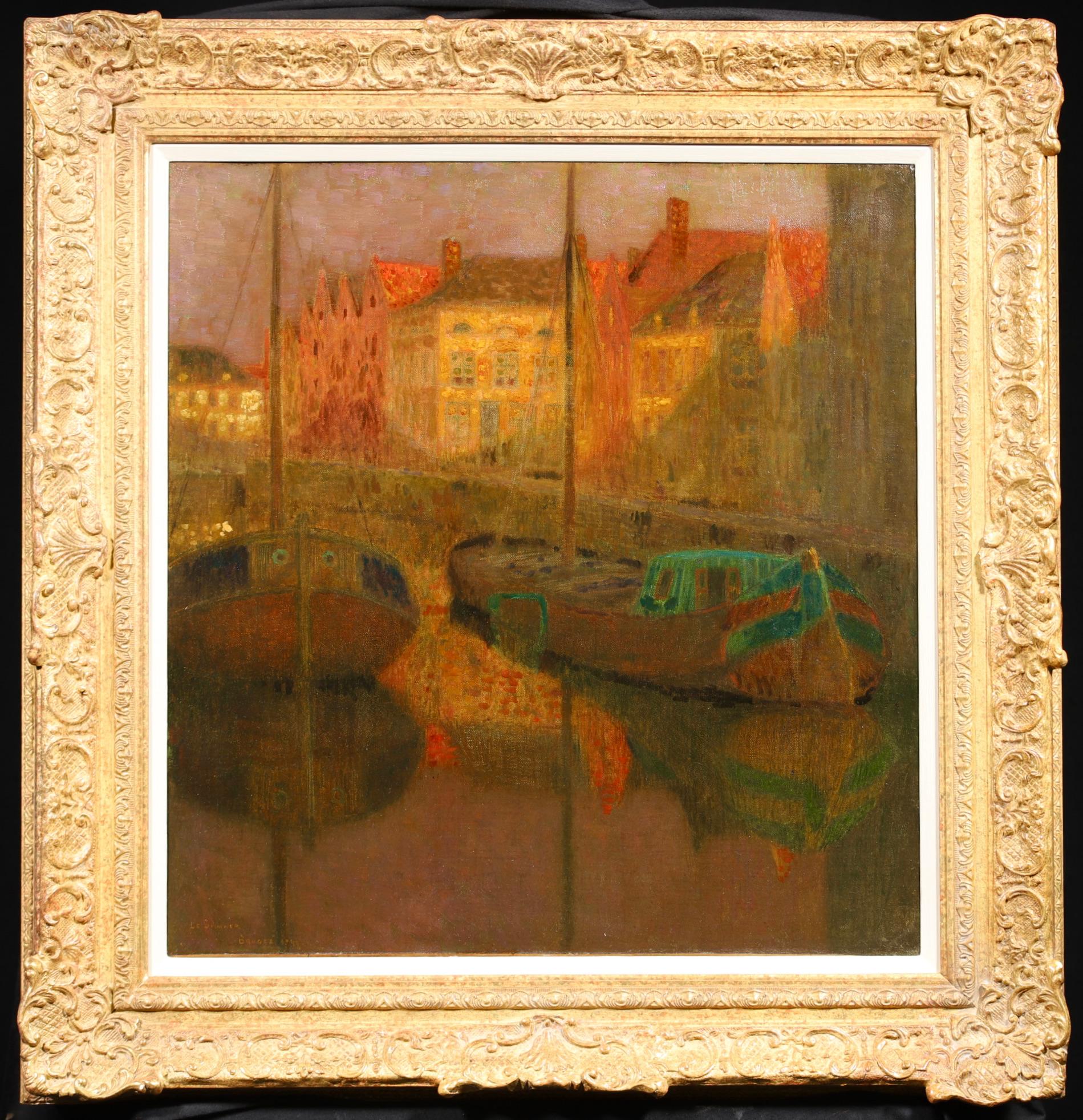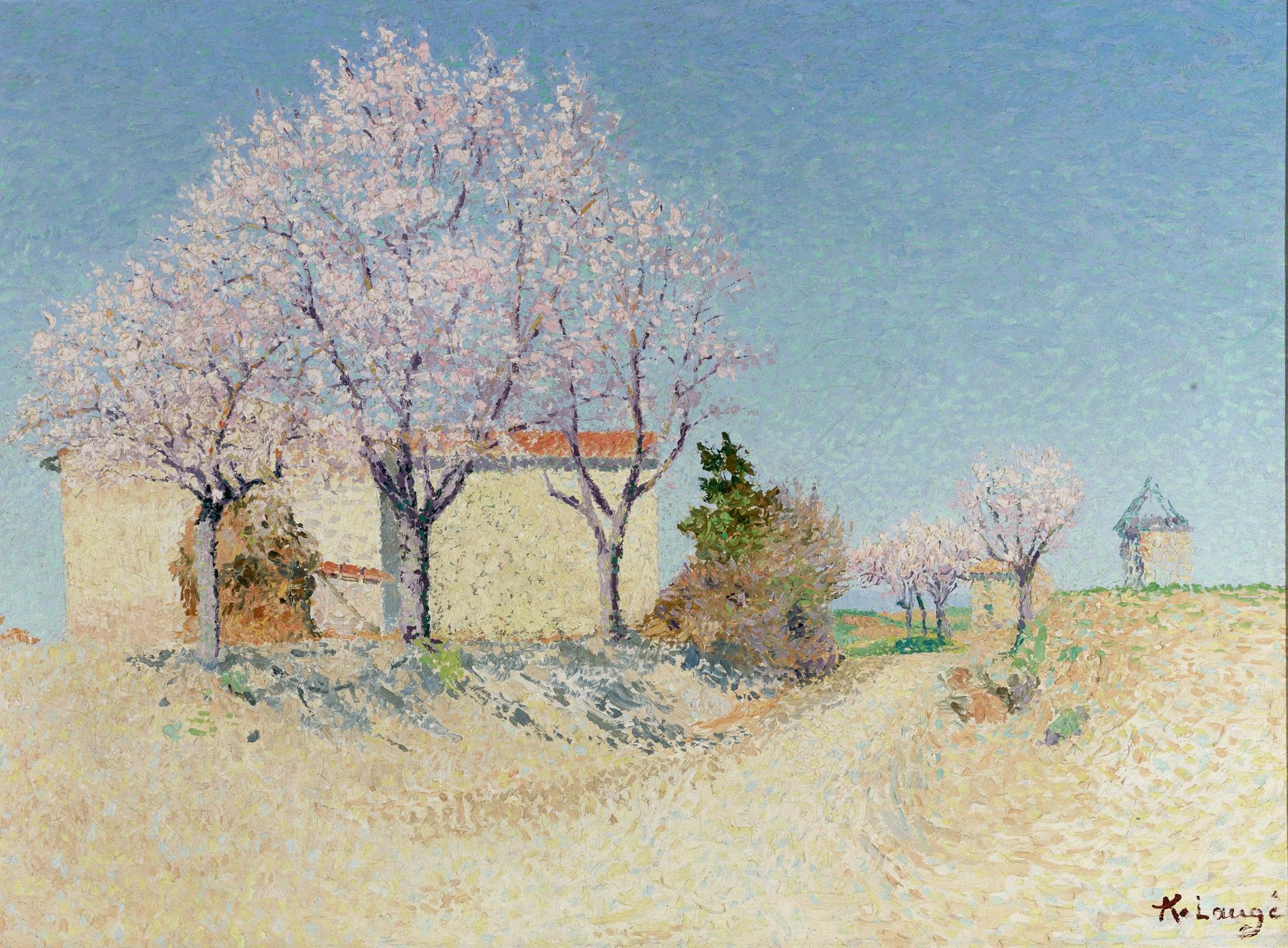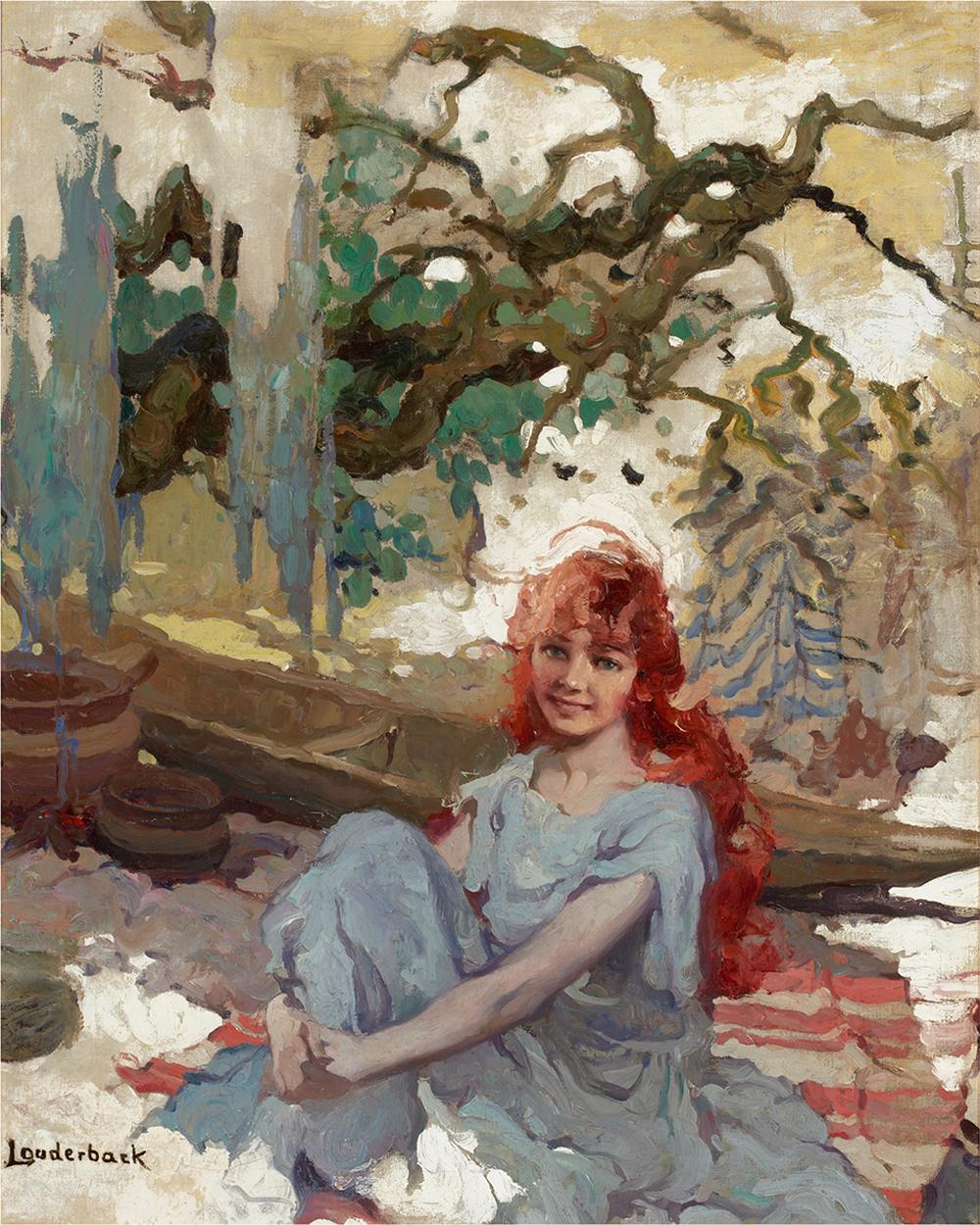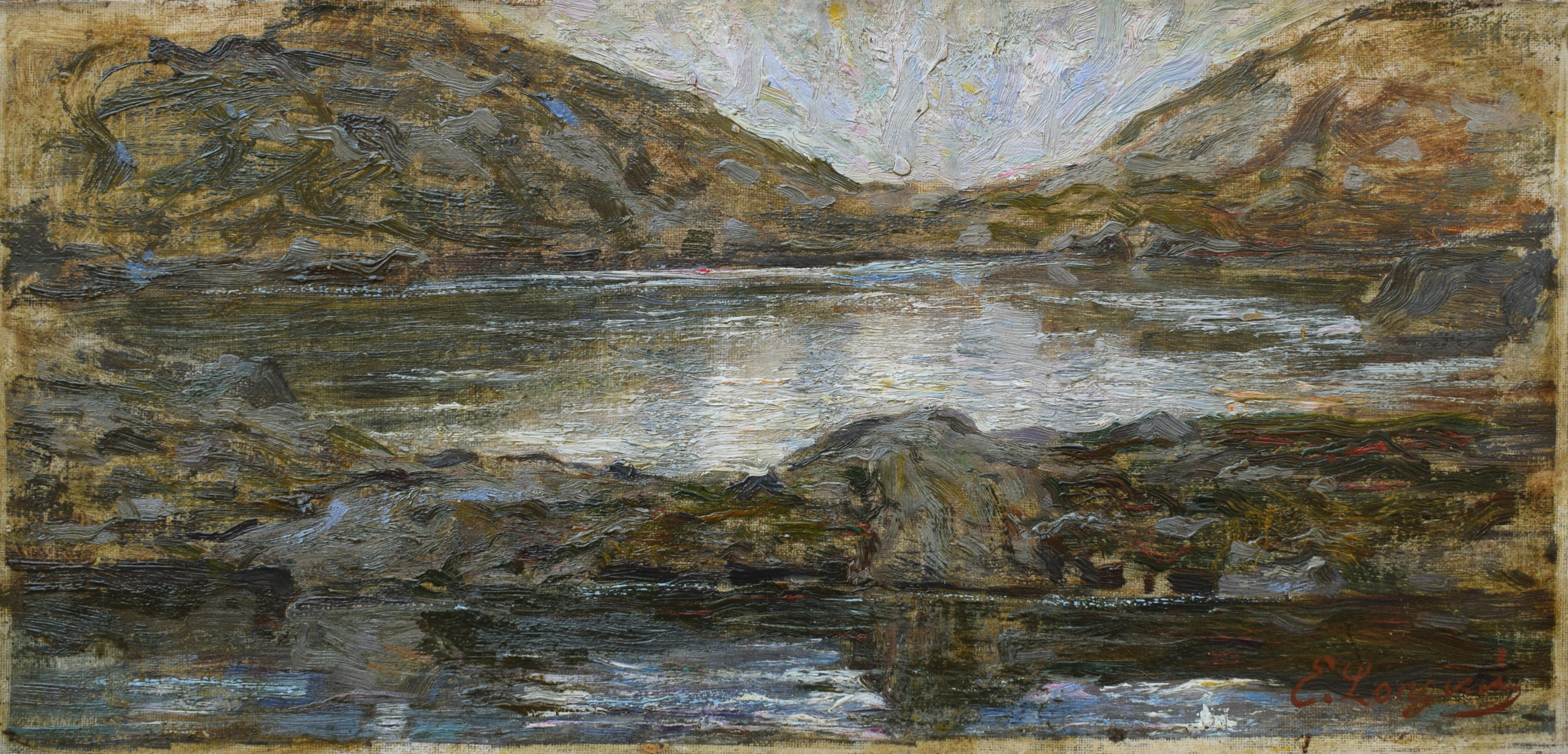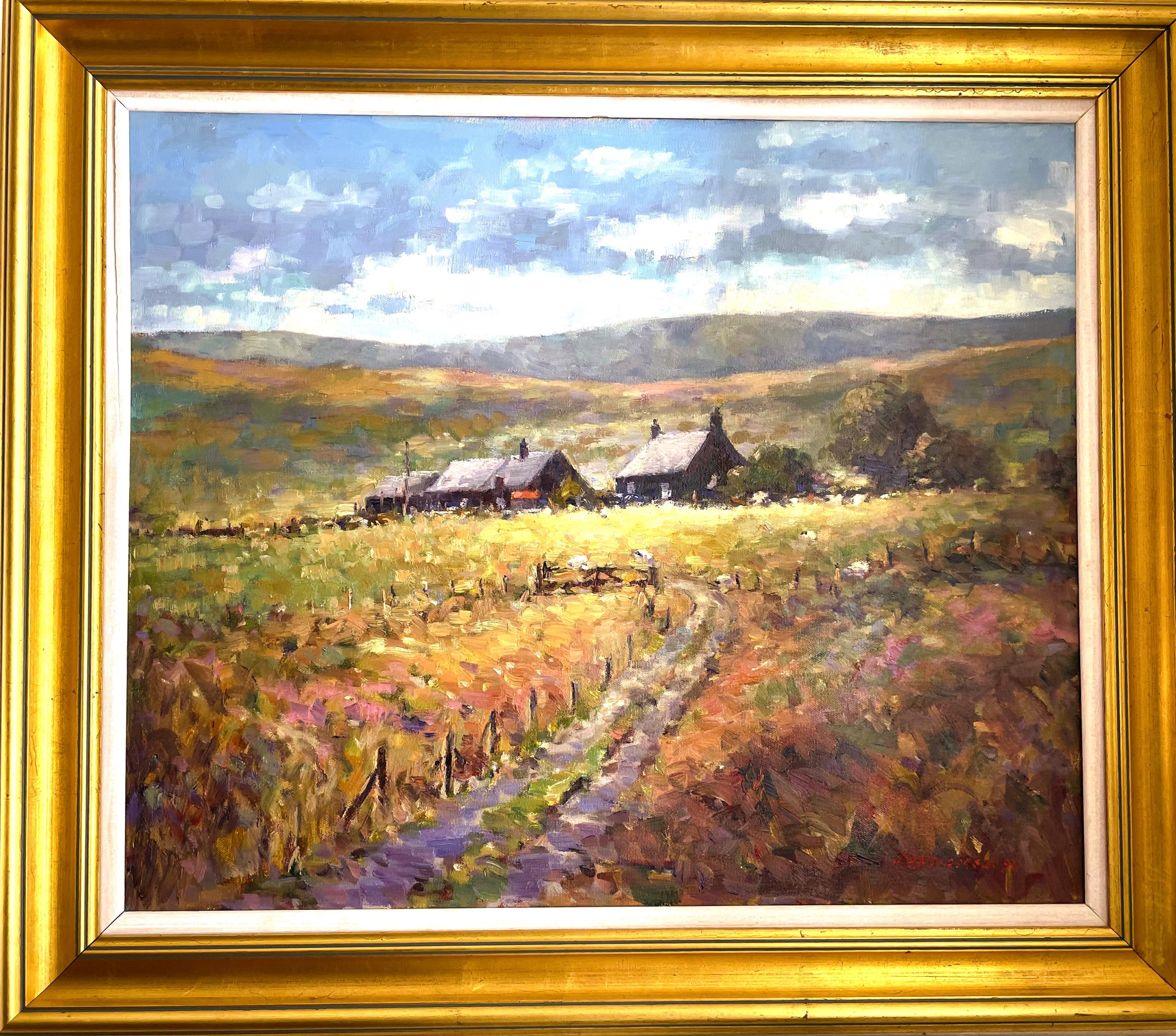Jacques Zuckerstreet scenery
About the Item
- Creator:Jacques Zucker (1900 - 1981, American)
- Dimensions:Height: 13.9 in (35.31 cm)Width: 11.5 in (29.21 cm)Depth: 0.13 in (3.31 mm)
- Medium:
- Movement & Style:
- Period:
- Condition:upper right corner chipped and other corners a drop worn. Please see photos.
- Gallery Location:Surfside, FL
- Reference Number:
Jacques Zucker
Jacques Zucker was a prolific artist whose works are exhibited in museums and galleries around the world. Being heavily influenced by artists such as Chaim Soutine, Marc Chagall and Pierre-Auguste Renoir, we can see hints of their styles suggested in many of his works. Although he was very fond of these artists, Zucker's works are mainly impacted by his travels to Paris, America and France. Many of his works depict city street scenes, the seashore, flower still life and portraits of friends and relatives. He has developed a style completely apart from his influences, creating works that are rich in texture, color and emotion.
- ShippingRetrieving quote...Ships From: Surfside, FL
- Return PolicyA return for this item may be initiated within 3 days of delivery.
- Modernist Oil Painting Moody Fauvist Abstract Nude Figure Ralph Della VolpeLocated in Surfside, FLRALPH DELLA-VOLPE (1923-2017) Fine Art Painter, American Contemporary Oil on canvas Hand signed lower right Artist Signed, Abstract Oil on Canvas. Figure in the distance. Approx: 30" x 27 1/2" framed, 26 1/2" x 23 1/2" canvas. TRAINING: National Academy of Design The Art Students League, NYC Ralph Eugene Della-Volpe's semi-abstract paintings of often simplified, minimalist, beach scenes and anonymous portraits "convey profound awareness of mood and character", and his paintings are hardly as literal as they may first appear (Arts Magazine. "New York Exhibitions". 1965). His brightly-colored, light-infused, ornamental compositions bring together aspects of many modernist art movements including Fauvism, Impressionism, Symbolism, and abstraction. Della-Volpe first studied painting at the prestigious National Academy of Design before joining the Army during World War II. As a soldier, the artist saw action on Utah Beach, winning a Purple Heart, and his experiences undoubtedly affected his later artistic style. The Fauvist "coloristic exuberance" found in the works beginning in the mid 1960's, with their vibrant fuschias and yellows, seem to offset what could be an otherwise solemn tone to many of his works at the time. Upon his return from military service, Della-Volpe’s style evolved significantly. In the years following the second world war, his work was solemn, imbued with a quiet darkness. Over time, this darkness faded: by the 1950s, influenced by his time at the Art Students League, his oeuvre was overtaken by the tenants of Abstract Expressionism. Paintings from this period boast bold brushwork, energetic compositions, and strong color. Although the next decade saw Della-Volpe trade expressionist abstraction for figuration, his love of color continued to shine through his work.Della-Volpe took a teaching position as the first artist-in-residence at Bennett College in Millbrook, New York where he remained for 28 years, serving as chairman of the Art Department for most of that time. Obviously influenced by impressionism 's preoccupation with the treatment of light, Della-Volpe's own works have a "faultless tonal quality, with its sense of failing light—the areas of silvery gray deepening into rosy tans" (Arts Magazine. "In the Galleries". 1960). Della-Volpe has exhibited widely throughout his career and has lectured on art at colleges, universities, and galleries across the country. He was included in the show Abstraction: 1950-1970 at Taylor Graham, Greenwich CT. A survey of post-war abstract art movements including Abstract Expressionism, Color Field, Hard Edge, Minimalism and Op-Art. Adolph Gottlieb, André Cottavoz, Carl Robert Holty, Cleve Gray, Friedel Dzubas, Ilya Bolotowsky, James Hiroshi Suzuki, Norman Bluhm, Ralph Della-Volpe, Theodore Appleby...Category
20th Century Fauvist Abstract Paintings
MaterialsCanvas, Oil
- Synagogue Interior Jerusalem French Judaica Oil Painting Israeli Bezalel SchoolBy Jacques ZuckerLocated in Surfside, FLGenre: Post Impressionist Subject: Landscape Medium: Oil Surface: Canvas Country: France Dimensions: 24" x 20" Jacques Zucker was born in 1900 in Radom, Poland. He was a notably famous Jewish American artist mostly known for his expressionist figure paintings. In his young years he traveled to Palestine to study fine arts at the Bezalel Art School in Jerusalem. In 1917 he joined the British Royal Fuesiliers under the leadership of General Allenby to liberate Palestine from the Turks. After the first World War he settled in Paris, where he continued his studies at Académie Julian and Academie Colarossi. He then emigrated to the United States in 1922 and continued his art studies at the National Academy of Design. He supported himself by designing jewelry. In 1925 he returned to Paris and studied at the Academie de la Grande Chaumier et Colarossi. During the Depression he worked for the WPA. From 1928 he took part in the Paris Salons: Autumn and the Tuileries. His works are expressionistic variations in the type of the Ecole de Paris. As a protégé of both Chaim Soutine and Renoir, hints of their style can be observed in much of his own work. Zucker’s style, that may have been influenced from the art of artists such as Marc Chagall, took pride in being an “internationalist”, standing the art of painting in its highest expression is universal no matter where the canvas was created. People who respond to quality in art will understand the beauty and meaning, in their own land or in a foreign land, this was his main idea behind his artworks that was exhibited in numerous solo show in leading galleries and museums in New York, Paris, Tel Aviv, and other art centers. Claude Roger-Marx of Figaro Litteraire, dean of French art critics, write a comprehensive study of Zucker’s illustrated with 135 color and black and white plates. He traveled widely, including Italy, Spain, Portugal, Mexico and Israel. From then on Zucker lived alternately in New York and Paris, maintaining homes in both places, and spent considerable time painting in Mexico, Portugal, Greece, and Israel. Zucker's post-impressionist works including town and landscapes, still-lives, and portraits, are part of an array of permanent installments in numerous museums and private collections in Tel Aviv, including the Joseph Hirschorn collection in Washington, D. C., the Museum of Modern Art in Paris, and the Bezalel Art Museum in Jerusalem. In 1947 he settled in Arcueil near Paris. Zucker died in 1981 in New York. The School of Paris, Ecole de Paris, was not a single art movement or institution, but refers to the importance of Paris as a center of Western art in the early decades of the 20th century. Between 1900 and 1940 the city drew artists from all over the world and became a centre for artistic activity. School of Paris was used to describe this loose community, particularly of non-French artists, centered in the cafes, salons and shared workspaces and galleries of Montparnasse. Before World War I, a group of expatriates in Paris created art in the styles of Post-Impressionism, Cubism and Fauvism. The group included artists like Pablo Picasso, Marc Chagall, Amedeo Modigliani and Piet Mondrian. Associated French artists included Pierre Bonnard, Henri Matisse, Jean Metzinger and Albert Gleizes. The term "School of Paris" was used in 1925 by André Warnod to refer to the many foreign-born artists who had migrated to Paris. The term soon gained currency, often as a derogatory label by critics who saw the foreign artists—many of whom were Jewish—as a threat to the purity of French art. Art critic Louis Vauxcelles, noted for coining the terms "Fauvism" and "Cubism", Waldemar George, himself a French Jew, in 1931 lamented that the School of Paris name "allows any artist to pretend he is French. it refers to French tradition but instead annihilates it. The artists working in Paris between World War I and World War II experimented with various styles including Cubism, Orphism, Surrealism and Dada. Foreign and French artists working in Paris included Jean Arp, Joan Miro, Constantin Brancusi, Raoul Dufy, Tsuguharu Foujita, artists from Belarus like Michel Kikoine, Pinchus Kremegne, and Jacques Lipchitz, the Polish artist Marek Szwarc and others such as Russian-born prince Alexis Arapoff. A significant subset, the Jewish artists, came to be known as the Jewish School of Paris or the School of Montparnasse. The core members were almost all Jews, and the resentment expressed toward them by French critics in the 1930s was unquestionably fueled by anti-Semitism. Jewish members of the group included Emmanuel Mané-Katz, Chaim Soutine, Adolphe Féder, Chagall, Moïse Kisling, Maxa...Category
Mid-20th Century Post-Impressionist Landscape Paintings
MaterialsCanvas, Oil
- Farmhouse in Provence, Post Impressionist Oil on CanvasBy Jacques ZuckerLocated in Surfside, FLGenre: Post Impressionist Subject: Landscape Medium: Oil Surface: Canvas Country: France Dimensions: 20" x 24" Jacques Zucker was born in 1900 in Radom, Poland. He was a notably famous Jewish American artist mostly known for his expressionist figure paintings. In his young years he traveled to Palestine to study fine arts at the Bezalel Art...Category
Mid-20th Century Post-Impressionist Landscape Paintings
MaterialsCanvas, Oil
- Large Modernist Fauvist Oil Painting Constantin Kluge French Countryside BloomsBy Constantine KlugeLocated in Surfside, FLConstantine Kluge (French 1912-2003) Les Pommiers en Fleurs Oil on canvas of apple trees in bloom Hand signed lower right. Provenance: purchased from Wally Findlay Galleries. (bear...Category
1960s Post-Impressionist Figurative Paintings
MaterialsCanvas, Oil
- Modernist Oil Painting Bucolic Valley Woods Landscape Ralph Della VolpeLocated in Surfside, FLRALPH DELLA-VOLPE (1923-2017) Fine Art Painter, American Contemporary The Valley Oil on canvas Hand signed lower left and again to stretcher and verso 16 x 20 inches. frame dimensions: 22 1/4 x 26 inches, wood frame Provenance: The Estate of the artist Ralph Della Volpe TRAINING: National Academy of Design The Art Students League, NYC Ralph Eugene Della-Volpe's semi-abstract paintings of often simplified, minimalist, beach scenes and anonymous portraits "convey profound awareness of mood and character", and his paintings are hardly as literal as they may first appear (Arts Magazine. "New York Exhibitions". 1965). His brightly-colored, light-infused, ornamental compositions bring together aspects of many modernist art movements including Fauvism, Impressionism, Symbolism, and abstraction. Della-Volpe first studied painting at the prestigious National Academy of Design before joining the Army during World War II. As a soldier, the artist saw action on Utah Beach, winning a Purple Heart, and his experiences undoubtedly affected his later artistic style. The Fauvist "coloristic exuberance" found in the works beginning in the mid 1960's, with their vibrant fuschias and yellows, seem to offset what could be an otherwise solemn tone to many of his works at the time. Upon his return from military service, Della-Volpe’s style evolved significantly. In the years following the second world war, his work was solemn, imbued with a quiet darkness. Over time, this darkness faded: by the 1950s, influenced by his time at the Art Students League, his oeuvre was overtaken by the tenants of Abstract Expressionism. Paintings from this period boast bold brushwork, energetic compositions, and strong color. Although the next decade saw Della-Volpe trade expressionist abstraction for figuration, his love of color continued to shine through his work.Della-Volpe took a teaching position as the first artist-in-residence at Bennett College in Millbrook, New York where he remained for 28 years, serving as chairman of the Art Department for most of that time. Obviously influenced by impressionism 's preoccupation with the treatment of light, Della-Volpe's own works have a "faultless tonal quality, with its sense of failing light—the areas of silvery gray deepening into rosy tans" (Arts Magazine. "In the Galleries". 1960). Della-Volpe has exhibited widely throughout his career and has lectured on art at colleges, universities, and galleries across the country. SOLO SHOWS: Hotchkiss Library, Sharon, Conn Millbrook Library, Millbrook,NY Gregory James Gallery...Category
20th Century Fauvist Abstract Paintings
MaterialsCanvas, Oil
- Large French Oil Painting Paris, Seine River w Bridge, Landscape, Lucien DelarueBy Lucien DelarueLocated in Surfside, FLLucien Delarue (1925-2011) Paris Seine River Scene. "Seine at Paris" Provenance: Newman Gallery, Phila. Label verso. Hand signed on Canvas. Dimensions: H: 25 inches: W: 31.5 inches: Frame: 35 X 41 inches Artist Lucien Delarue was born in Paris in 1925, and he is known for his spectacular cityscape painting. Post Impressionist painter He studied at the studios of Grande Chaumiere, Paris and was a pupil of Maitre Yves Brayer. He is best know as a French Impressionist. He loved to paint the romantic streets of Paris with its stunning architecture and beauty. Also included in his repertoire is colorful French floral still life paintings, South of France country cottages, harbor views, and river scenes. At a very early age Delarue began taking part in exhibitions. Quickly he was talking medals for his works including first prize and the Vermeil-Medaille at the Salon Violet. Other gold medals include the Salon of Vincennes, and the Salon of Clichy (1973). In 1974 he won the silver medal at the Salon des Artistes Francais, and a bronze medal at the "Arts-Sciences-Lettres" exhibition in Paris. He also exhibited works at the Museum of Ile de France in the chateau of Sceaux. He held exhibitions in New York and in San Francisco in the United States. He was a member of the Salon des Artistes Francais and of the French Watercolor Society.Lucien Delarue excelled in recreating the cottages, harbor views, and expressionist architecture of Paris in his artwork. His watercolor paintings include color-rich representations of France's many scenic rivers. Delarue would eventually become a member of the French Watercolor Society and the Salon des Artistes Francais. He showed with Henk Bos...Category
Mid-20th Century Post-Impressionist Landscape Paintings
MaterialsCanvas, Oil
- “Ship at Full Sail”, post-impressionist seascape of Clipper ship, oil on canvasLocated in Nutfield, SurreyMichael Stephanon (b. 1937) A well executed oil on canvas painting of a clipper at full sail by the Scandinavian artist Michael Stephanon. Although there are very few recorded det...Category
20th Century Post-Impressionist Landscape Paintings
MaterialsCanvas, Oil
- Barques de Peche - Post Impressionist Landscape Oil by Henri Le SidanerBy Henri Le SidanerLocated in Marlow, BuckinghamshireSigned post impressionist landscape oil on canvas by French painter Henri Le Sidaner. This stunning piece depicts two fishing boats moored in a fishing village at sunset. The last l...Category
1890s Post-Impressionist Landscape Paintings
MaterialsOil, Canvas
- Almond Trees in SpringBy Achille LaugéLocated in New Orleans, LAThis Neo-Impressionist landscape by the French artist Achille Laugé captures an orchard in late spring in his celebrated, highly modern style. The work displays a thick impasto thanks to the artist's distinctive technique of applying his paint in quick dabs, a characteristic of his later works. One of the foremost painters of the Post-Impressionist period, Laugé’s works are beloved for his sensitivity to light, shade and tone, and his mastery of medium is clearly on display in Almond Trees...Category
20th Century Post-Impressionist Landscape Paintings
MaterialsOil, Canvas
- Girl with canoe painted in Arts and Crafts styleBy Walt LouderbackLocated in Miami, FLSigned lower left. Most likely for Saturday Evening Post or Colliers. Louderback is a painter/illustrator of the Golden Age of Illustration...Category
1920s Post-Impressionist Figurative Paintings
MaterialsCanvas, Oil
- Alpine lakeLocated in Roma, RMEmilio Longoni (Barlassina 1859 - Milan 1932), Alpine Lake (1910) Oil painting on canvas pasted on board 20 x 41 cm signed lower right in Emilian frame late 16th century.Category
Early 20th Century Pointillist Landscape Paintings
MaterialsCanvas, Oil, Board
- Middleton Farm, ComrieBy JD HendersonLocated in Hillsborough, NC'Middleton Farm, Comrie' represents Saltire Gallerie's Scottish landscape theme, 'A Sense of Place'. This is a contemporary painting (1996, dated verso), in a post-impressionist style by Scottish artist JD Henderson. The artist's signature is in the right lower corner. Including the frame the overall size is 25" high and 29" wide, using oil paint on canvas and presented in a gilt frame. This painting is one of three post-impressionist paintings by JD Henderson currently in Saltire Gallerie. Buy one, or buy two for a discounted price. Make an offer! All three are compatible and would work beautifully together. See 'Sunlit Path' and 'Kirkton Bridge' in the Saltire Gallerie storefront. JD Henderson's work has been exhibited in galleries in Scotland, particularly Glasgow. The post-impressionist style, use of color and emphasis on the subjects of Scottish scenery make this artist stand out among contemporary artists. Stone bridges, rural croft houses...Category
1990s Post-Impressionist Landscape Paintings
MaterialsCanvas, Oil

